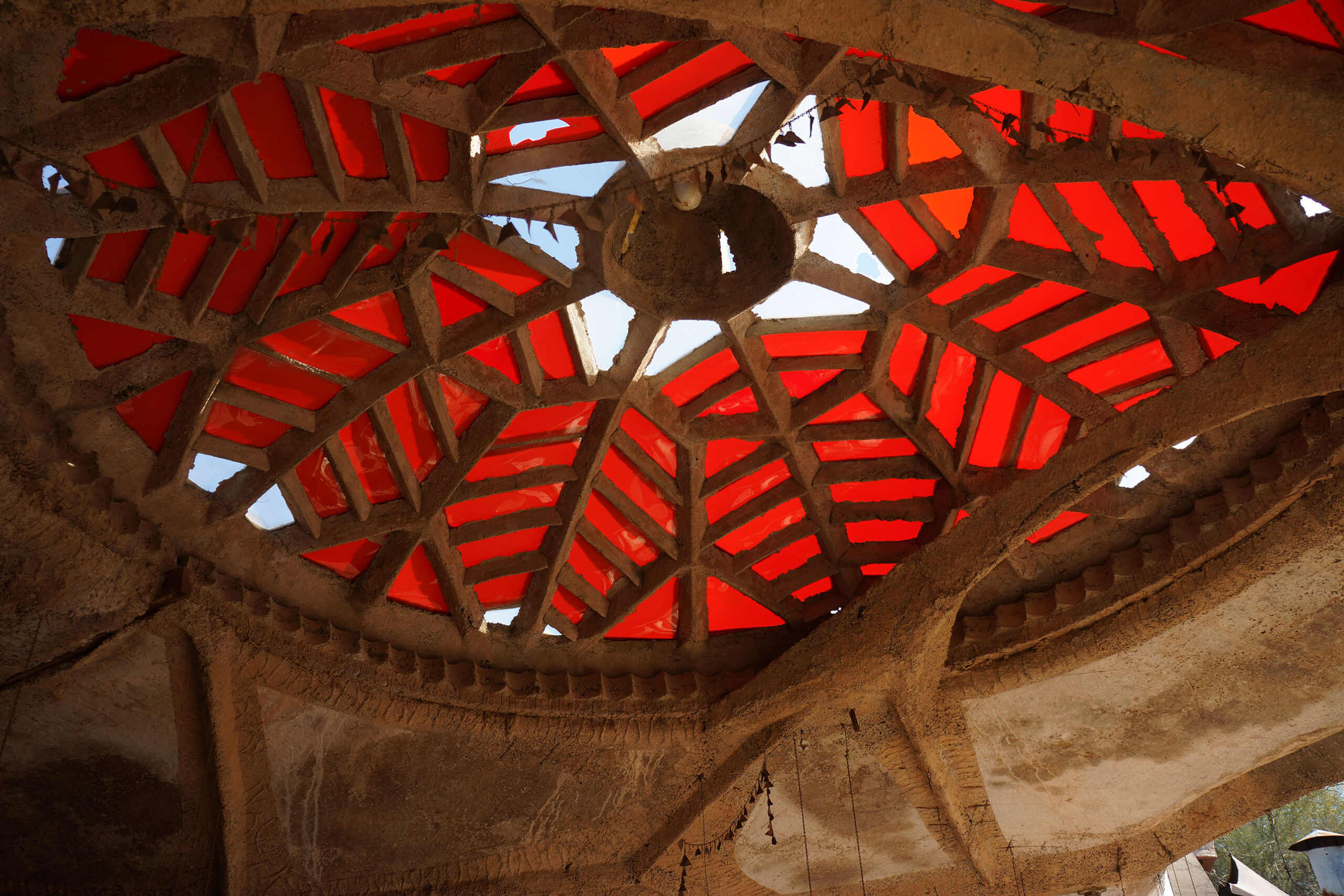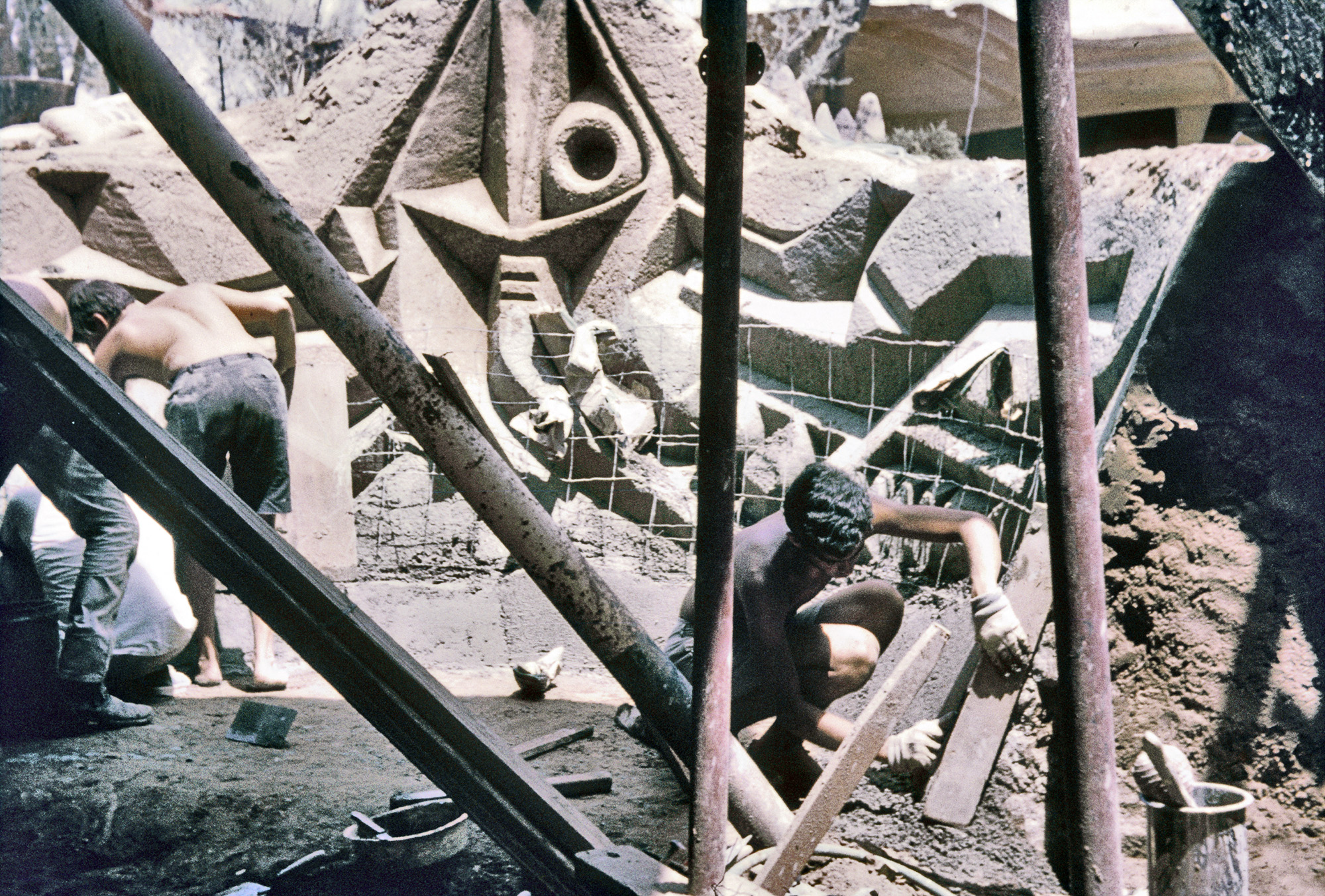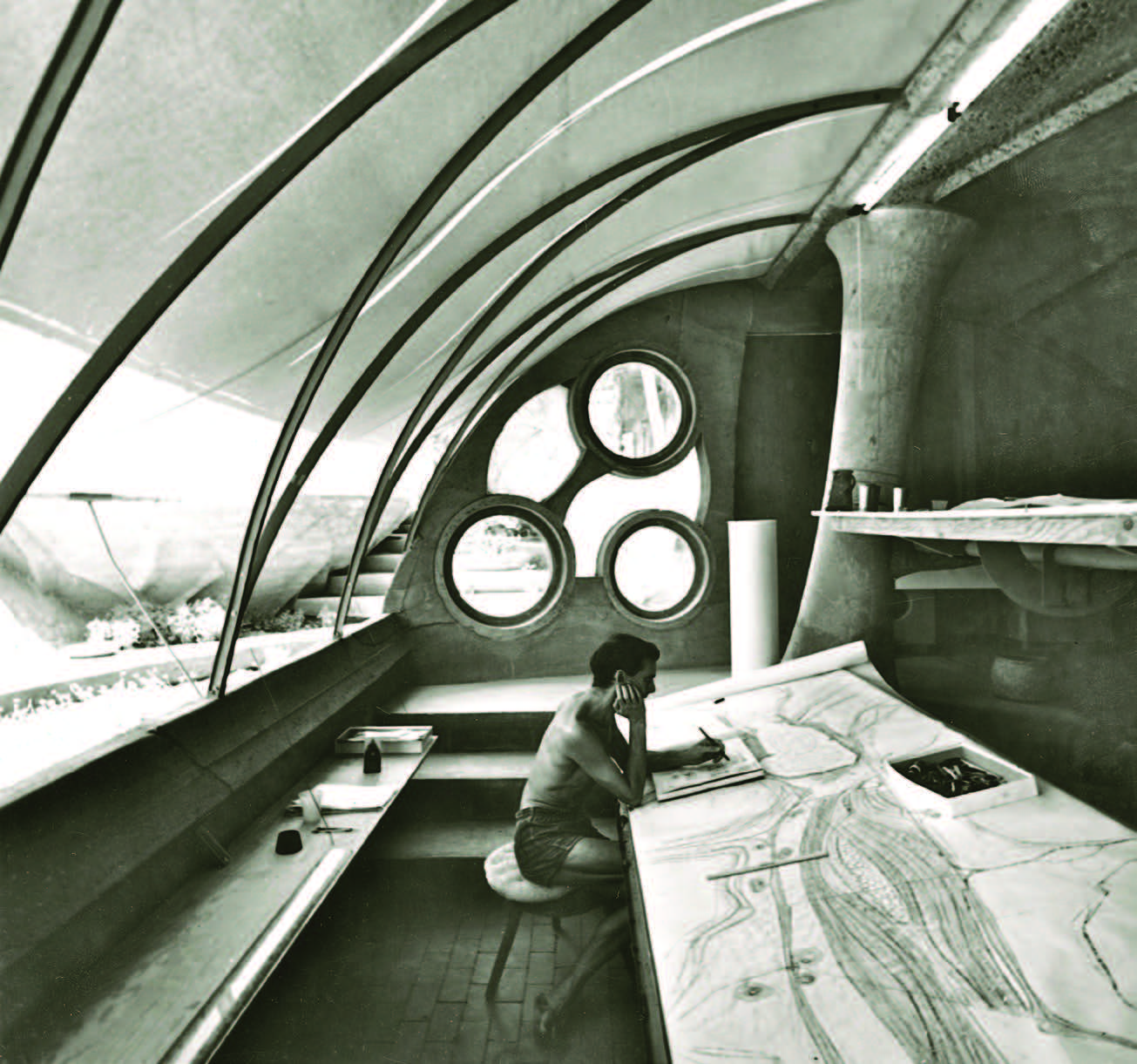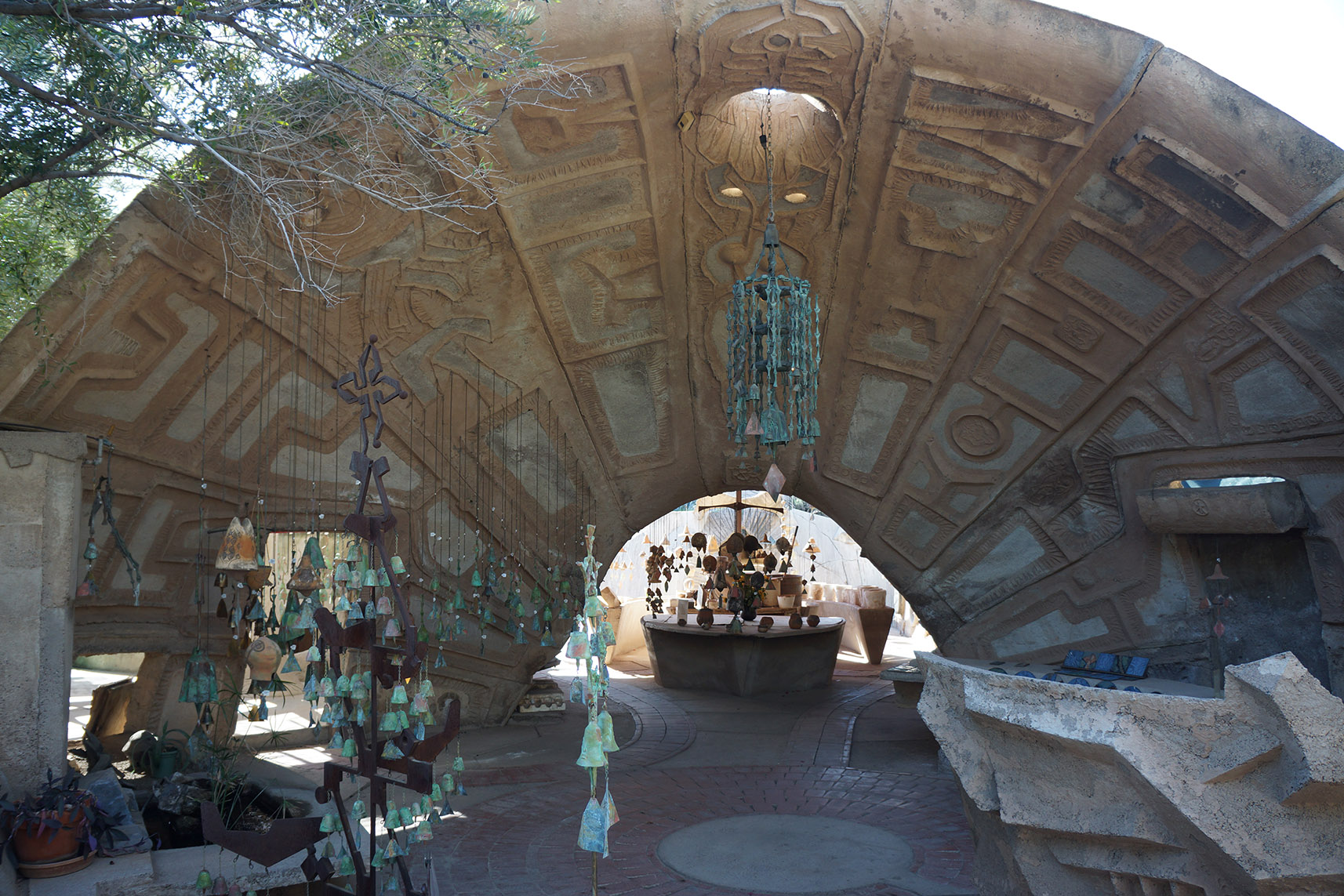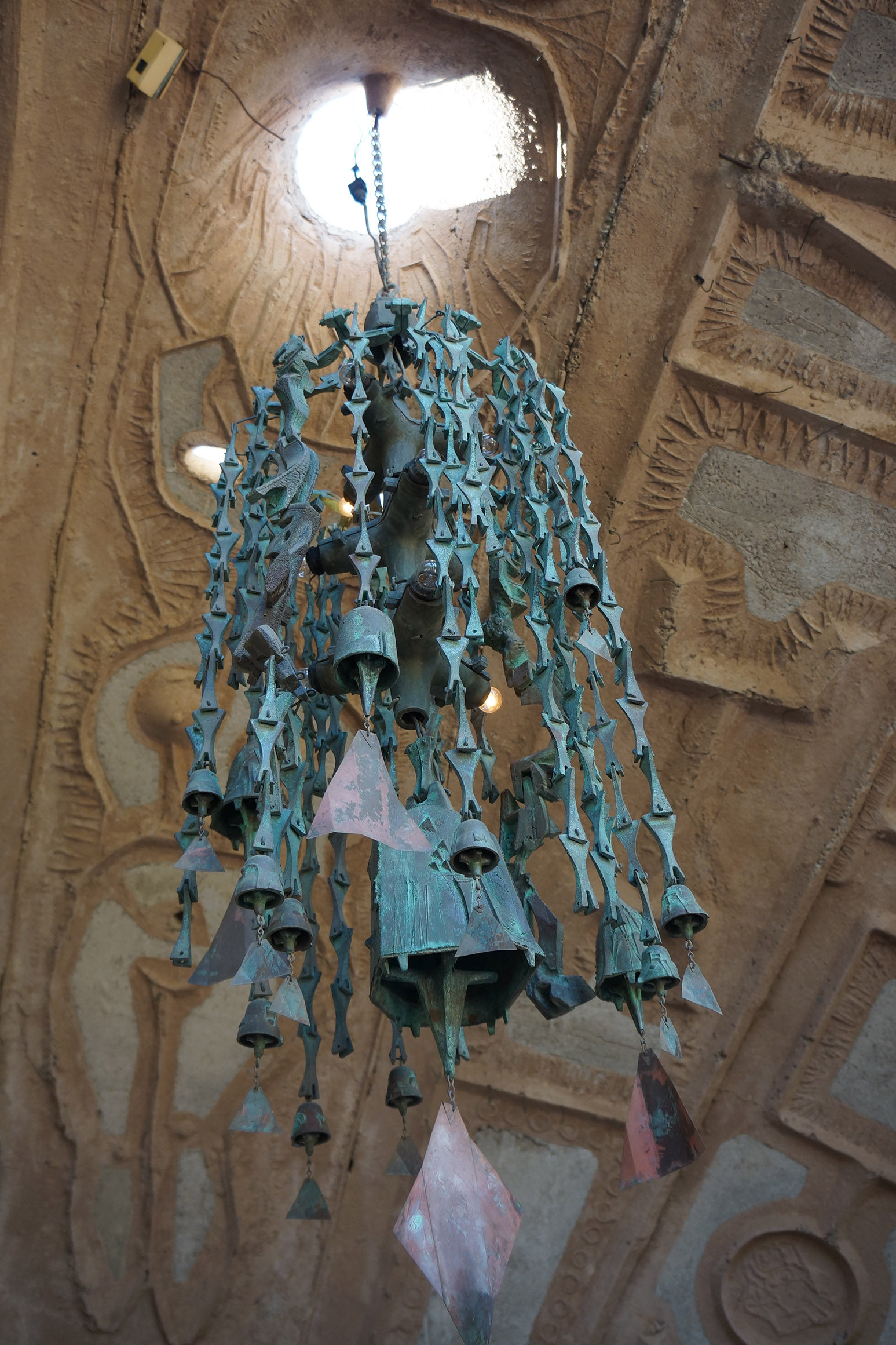Be part of the conversation: azarchitecture/Jarson & Jarson Architecture blog covers architecture and civic topics that comment on what’s happening in the Valley’s diverse design community. Here’s what’s happening now:

Our Visual Wealth: Turin, Time with Wright and Then Cosanti – Part 2
Born in Turin, June 21, 1919, in the Po Valley of northern Italy, Paolo Soleri visited the United States in December 1946 after receiving his master’s degree in Architecture from the Politecnico di Torino. Here he spent 18 months in fellowship with Wright at Taliesin West and Taliesin. For philosophical and personal reasons, they parted.
In 1950, Soleri and wife Colly traveled to Italy where he designed his only commercial commission, Ceramica Artistica Solimene, in Vietri south of Naples on the Adriatic. During the design and construction of the factory, he learned ceramics, a skill he used later to make his original bells at Cosanti.
The couple returned to the Southwest about four and a half years later, inspired by what Paolo called its “light and landscape” in a January 22, 1999, interview with Anne Andeen and Ann Townsend, Town of Paradise Valley Historical Committee members. He recalled: “We were in Santa Fe for one season and we found out that it was too cold for ceramics, the ceramics would freeze when we were working outdoors. So we came here because by looking around, we ended up finding these five acres for sale.”
Here they settled with their daughter, Daniela, today a researcher in California. They first lived in the Pink House, a still-standing redwood home built in 1920s, perhaps the oldest structure in Paradise Valley. At the time, the home was owned by painter Lew Davis and his wife, ceramicist Mathilde Schaefer. In 1963, the town annexed the area which includes Cosanti.
“Paolo fell in love with the unique environment of the desert. Here he found a place where you can live in harmony with nature and with others, using materials of the earth already here,” says Patrick McWhortor, former president and CEO of the Cosanti Foundation and an ex officio member of the board of directors. “It all started at Cosanti.”
“Paolo found the silt on the floodplain of the Indian Bend Wash great to work with. He could make molds with it and it could withstand concrete poured over it, as he and his students did with a number of the buildings,” says Victor Sidy, former head of school and dean of the Frank Lloyd Wright School of Architecture, and managing principal of Victor Sidy Architect in Phoenix. He remains a board member of the school with others such as alumni, Bing Hu, founder and president, H&S International, and John Sather, managing partner, Swaback Architects + Planners, Scottsdale.
Soleri also designed his only other Arizona homes, the Dome House in Cave Creek (1949), built for Colley’s mother in Cave Creek, an inspiration for the Earth House at Cosanti, and the Deconcini House (1984), once owned by Arizona Senator Dennis Deconcini and his brother, Dino, in Phoenix.
In 1970, he and his students began building Arcosanti (“Architecture” + “Cosanti”) to test Soleri’s concepts of urban planning, how future cities can be more pedestrian-centric and less automobile dependent, more multi-use, and more vertically dense to alleviate strain on planetary resources.
Described at the time an “urban laboratory” by Ada Louise Huxtable, the New York Times architecture critic, Arcosanti was featured in a 1976 Newsweek article, which called it “. . . probably the most important experiment [in urban architecture] in our lifetime.” Adds Scott Jarson: “The concepts formulated at Cosanti are taken to a macro level at Arcosanti. They become huge.”
“Arcosanti is just an attempt to implement some ideas,” Soleri said in the 1999 interview. “The idea is the urban affect which is what made civilization. The point I am making constantly is that we have to re-invent the city in order develop our civilization.”
Only a few buildings, such as Antioch (1974) were completed at Cosanti after work at Arcosanti began, but molding and firing the windbells continued here and at Arcosanti, where Soleri focused most of his efforts on his city of the future.
There he is buried in a private cemetery next to Colly.
The Cosanti Achievement
The Earth House was the first experimental structure, built shortly after the family purchased the land. “The roof, it’s buried so that it was below grade,” Soleri recalled in the Andeen and Thompson interview. “The desert is very flat, so I shaped the desert by hand, then we cast the roof, then we excavated under the roof to make this space, we put walls in and divided it. So you do the roof and then the foundation.”
The Gallery is similarly constructed. Jeffrey Cook, AIA, described the innovative process in A Guide to the Architecture of Metro Phoenix – Central Arizona Chapter, American Institute of Architects, published 1983: “Moist earth was piled up and shaped as a mold for concrete construction. Rib shapes were cut into the mound of earth to hold the structural thickening and reinforcement. Polyethylene plastic film cut into patterns was placed on the earth-mold to defined smooth curved panels. The entire earth mound was sprayed with “gunite” . . . After the concrete hardened, the earth was removed from underneath with a bulldozer” (p. 189).
Bruder notes that Soleri and his students built every structure with similar care and craftsmanship.
“From the apse shells of the bell works to the sunken courtyards of the Earth House to the earth cast roofs of the CatCast Residence and the hovering concrete canopy over the swimming pool, each structure was ‘shaped’ and integrally carved with patterns and ornament by Paolo’s hands along with the support of his interns and apprentices,” he says.
Because of keen siting and construction, the campus is also an “an oasis of passive climatic comfort,” Bruder explains. “The site’s structures are thoughtfully recessed into the natural grade of the desert floor that surrounds them, creating a catchment of cool air along the pathways and courtyards connecting the buildings. The series of concrete apses and canopies is carefully oriented either to the north to optimize their shading from the heat of the summer sun or to the south to catch the warmth of the low winter sun angles.”
Sidy adds that the interior spaces provide shade and cooling: “They exhaust the hot air through an evaporative-cooling effect. Here is experimentation in a similar way as Wright. In fact, he engaged with the extremes of the desert much more than his teacher.”
“What makes Cosanti so special to me is the marriage between the earth and structure, the buff color from the silt integral in the concrete, for instance,” Jarson says. “The decorative work is also so beautiful, an homage to indigenous people who carved petroglyphs,” he adds, noting that Soleri also learned from Wright, early Roman builders, even Chinese designers.
Jarson’s favorite space is the Studio. “I remember looking through the windows as a young man, and there was Paolo Soleri at the same table that’s still there, designing,” he recalls. “It was very special then, and its magic remains with me now.”
Brown is a Valley-based freelancer (azwriter.com). This is the fourth in an ongoing written series celebrating Arizona’s “Visual Wealth.” His article on the Cosanti, first appearing in the June/July 2021 issue of Defining Desert Living, is being released over three segments. The first and third were published here and here.
To read the Editor’s Note on Dr. Daniela Soleri, Paolo Soleri’s daughter, please use the link here

